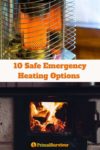Our heating systems are susceptible to outages, whether it is a blizzard, earthquake, flood, or another natural disaster. You’ll want at least one emergency heater so you don’t suffer hypothermia in your own home.
Ideally, you would have two types of emergency heaters. If you run out of fuel for the first, you could use the other one as a backup.
All types of emergency heaters can be broken down into classes.
Below is an overview of each type’s pros/cons and which are safest.
 Mr. Heater Big Buddy Propane Heater
Mr. Heater Big Buddy Propane Heater
Emergency Heater Safety
Hypothermia certainly causes some deaths during winter power outages. However, many deaths are also from improper heater usage. The biggest safety concerns with emergency heaters are carbon monoxide poisoning, fires, and gas leak explosions.
CO Poisoning
Carbon monoxide is the biggest safety concern with emergency heaters. During the week-long power outage in Texas in 2020, for example, there were at least 11 deaths and 1,400 hospital visits for CO poisoning. While some heaters are cleaner-burning, ALL heaters which burn fuel will produce CO gas. Thus, it is crucial that
To prevent CO poisoning:
- Follow venting requirements for your heater
- Use a battery-operated CO detector
- Only use heaters rated for indoor use
Fires
House fires also occur during winter power outages. Make sure you understand fire safety rules with your heater. Have a fire extinguisher near the heater while it is in use. Remind older children how to use it.
Gas Leaks
Never use flame-based heaters or lighting when there may be a gas leak. It’s better to be cold than have your home blow up. Note that gas leaks can occur during many natural disasters like earthquakes.
Best Ways to Heat Home in Emergency
1. Create a Warm Room
Before you turn on an emergency heater, you need to consider how you will trap that heat. This usually involves creating a “warm room” in your home. You will use supplies to separate the room from the rest of your home and insulate against heat loss.
Supplies you will need include:
- Plastic sheeting: Put these over windows, doors, and entranceways to keep heat from escaping. Large sheets of bubble wrap also work. If you use tarps to cover south-facing windows, make sure you take them down when the sun is out to allow solar heat through.
- Extra blankets: You can hang these over windows and doors for insulation.
- Duct tape or double-sided tape: For hanging the sheeting and blankets.
- Door draft stopper: This stops warm air from escaping in the cracks under doors. You can use rolled-up towels.
2. Propane Heaters
Propane heaters are the best emergency heaters for most homes. It mostly has to do with the fuel itself. Propane never goes bad and is easy to store. You can even store propane tanks outdoors.
Many types of heaters and other emergency appliances run on propane, including emergency stoves and lanterns. Compared to other fuels, propane burns cleanly, so there is little risk of CO poisoning.
Pros:
- Propane heaters are easy to use
- Fuel is cheap and readily available
- Propane is easy to store and doesn’t go bad
- Can use propane for generators, stoves, and lanterns
Cons:
- Tanks are heavy and difficult to move
Also read:
3. Kerosene Heaters
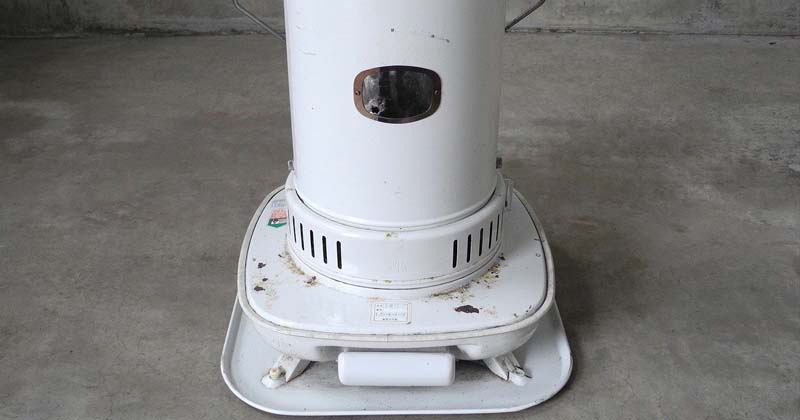
Kerosene is a very popular heating fuel in some parts of the world. However, kerosene heaters have a high learning curve compared to a propane heater. When misused, you can get terrible fumes, soot, fumes and deadly levels of carbon monoxide. Kerosene goes bad, so you need to store kerosene properly.
Despite these drawbacks, kerosene heaters can be a great emergency heater option. Kerosene has a lot of potential energy per BTU, so it often ends up being the cheapest heating fuel. They are also more portable since you can fill small amounts of fuel at a time instead of lugging around a heavy tank.
Pros:
- Kerosene is usually cheap
- Shelf life of 2-5 years
- Portable
Cons:
- Learning curve to operate
- Require regular maintenance
- Not very clean burning fuel
- Requires special storage
Also read:
- Best Kerosene Heaters for Indoors
- How to Light a Kerosene Heater
- Replace Wick in a Kerosene Heater
- Stop Kerosene Heater from Smelling
4. Wood Stoves
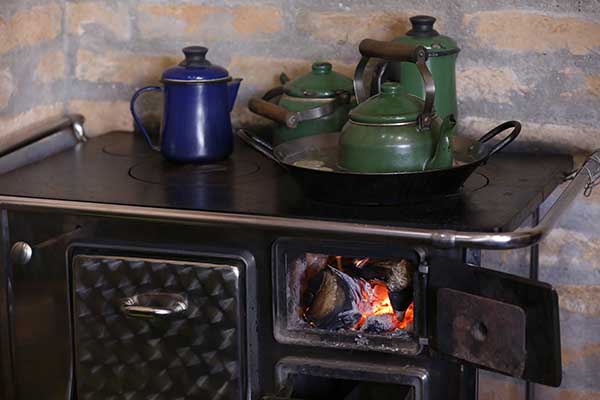
Wood stoves are a fantastic emergency heater. They produce a lovely heat, and you can often cook and bake on the stove. Wood also doesn’t release moisture into the air like propane and kerosene, so you won’t have condensation issues in a small space.
The downside is that wood stoves can end up being very expensive. Not only are some stoves pricey, but you may need to pay for chimney installation. Buying wood also can be costly. And let’s be honest: chopping all that firewood is hard work!
For these reasons, wood stoves usually make sense if you use them year-round and not just during emergencies.
Pros:
- Some wood stoves can be used for cooking and baking
- Dry heat – won’t release moisture into air
Cons:
- High initial investment
- Need a chimney or vent pipe
- Dry wood may be expensive or hard to find
- Difficult to regulate heat output
- Chopping wood is hard work
- Axe accidents can occur
Also read: Uses for Wood Stove Ashes
5. Passive Heaters
Passive heating involves heating an object which can absorb heat. You then put that object in your home. It slowly releases the heat and warms the room. Because there is limited heat output, passive heaters work best in very small spaces.
I first heard of passive emergency heaters from a Bosnian friend. During the war in the 1990s, people fleeing in winter would freeze because there was no heating on the buses. Enterprising people would go to checkpoints, heat bricks on a fire, and sell the hot bricks to passengers on the bus.
You could use this same principle to heat your home during an emergency.
For example:
- Heat bricks on an outside fire: Make a fire outside, put bricks or stones next to the fire (but not on the fire) to heat them, and then carry the bricks inside. As a bonus, you’ll get warmed up by lugging all those bricks around. This is a good solution for apartment dwellers without a chimney.
- Solar passive heating: Put bricks in front of a south-facing window when the sun is shining. The sun will heat the bricks, and they will radiate the heat off later.
- Put bricks near your emergency heater: You can also use passive heating in combination with your emergency heater: put some bricks next to your heater to absorb the heat. The bricks will continue to release heat even when you turn the heater off.
Pros:
- No need to light fire inside home
- Cheap and easy
Cons:
- Only suitable for very small spaces
- Don’t produce much heat
6. Fireplace Heating
Fireplaces are generally terrible for emergency heating because approximately 80% of the heat escapes up the chimney instead of going into your home. That means you’ll need a lot of wood or pellets to even slightly heat your home.
Another problem is that unless you use your fireplace often, chances are the chimney hasn’t been cleaned lately. Buildup in the chimney can ignite and cause a fire. Or it can block smoke from exiting, so those fumes end up in your home.
If you are serious about heating on wood, you are better off installing a wood-burning stove. But, in a pinch, your fireplace could keep you warm through a power outage. Just make sure to get your chimney cleaned before winter!
Pros:
- You may already have a fireplace and chimney
- Cozy heat
- Can cook food over fire
Cons:
- Very inefficient heater
- Bad for indoor air quality
- Chimneys must be cleaned before use
- Hard to control heat
- Must have fuel
7. Electric Heater
It isn’t just your electricity which can go out in winter. If you heat on gas, you need an alternative heating solution. Electric space heaters are the easiest solution.
Pros:
- Cheap and readily available
- Easy to use
- No carbon monoxide risk
Cons:
- Electricity can be expensive
- Not for electrical outages
8. Generator
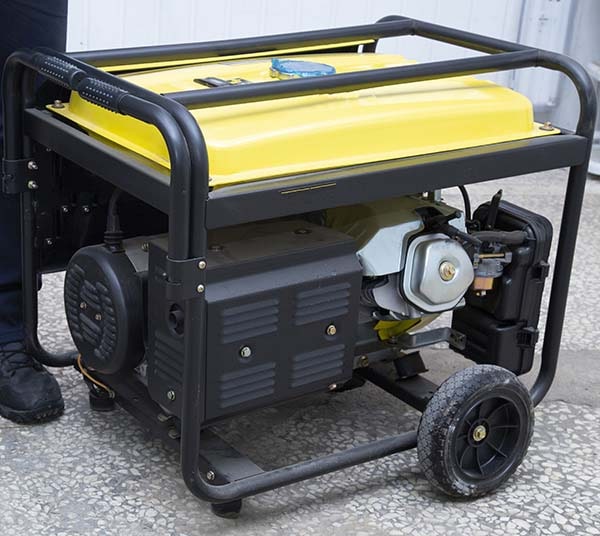
You can use a generator to run an electric space heater. You’ll need at least a 2000W generator to power most space heaters. If you want to run other appliances on the generator simultaneously, it will need to be an even higher wattage.
However, generators are inefficient for heating your home during an emergency. You first lose energy when converting the generator fuel to electricity and then lose more when converting the electricity to heat.
It can also be a pain to set up a generator for heating. The generator needs to be outside, so you’ll need long, heavy-duty extension cords to connect it to your heater. The cords may need to go through a window, which means you lose heat when the window is cracked open for the cord.
Pros:
- Generator can power multiple appliances
- Fuel kept out of home
Cons:
- Requires high-wattage generator
- Very inefficient
- Steep learning curve
Also Read:
- What size generator do I need?
- Best generator for emergency preparedness
- Best portable diesel generator
- Best dual fuel home generator
9. Battery Backup
Yes, it is possible to run an electric space heater off of a battery backup or power station. The problem is that most portable power stations cannot handle the high wattages required to start and run a space heater.
There are exceptions. The Goal Zero Yeti 3000X, for example, can handle heaters that are 2000W or lower. However, running the heater on it will cause the power station to drain very quickly.
Because of how quickly they drain, using a power station for heating only makes sense if you can recharge it, such as solar or wind power. Even then, it is only suitable for short-term power outages.
Pros:
- Can be recharged with wind or solar
- No fire risk
- Clean air and no CO risk
Cons:
- Large upfront cost
- Heater will drain battery very quickly
Also Read:
10. DIY Emergency Heaters
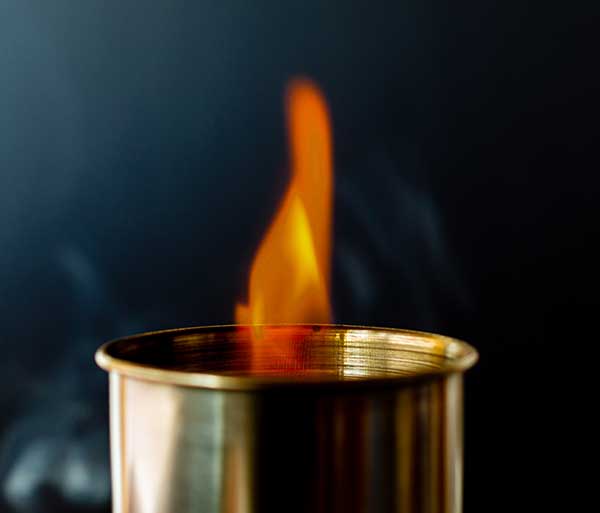
There are a lot of DIY emergency heaters you can make to keep your home warm. The most popular ones include terracotta flower pot, candle, and alcohol heaters. You can see homemade heaters here.
Read: Can a candle heat a room in an emergency?
While these DIY heaters will warm your home, they are generally very unsafe. For example, I’ve heard of multiple people who have had their terracotta flower pot heaters catch fire. Never leave a homemade heater unattended or running while you sleep.
Pros:
- Can be made from items you find
Cons:
- Very unsafe
- Must be constantly monitored
- Almost impossible to control heat output
Test Your Heater Before a Power Outage!
No matter what type of emergency heater you get for your home, it is essential that you test it out. This way, you can rest assured that you know how to run the heater (you won’t be able to ask the internet for instructions when the power is out!).
Testing your heater will also give you a realistic idea of how much fuel you need to stay warm. Pay attention to how much fuel you use to keep the heater running. Then use this information to calculate your emergency fuel needs.
For further information, read our guide to non-electric indoor heaters.
What emergency heater do you use? Let us know in the comments section below.
